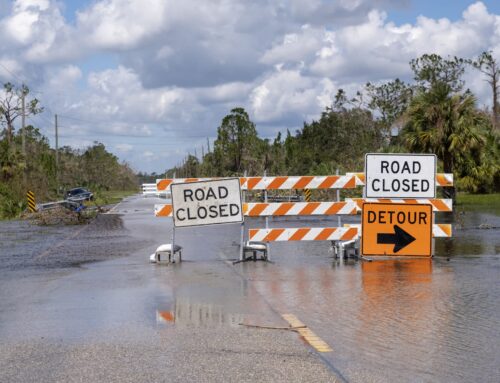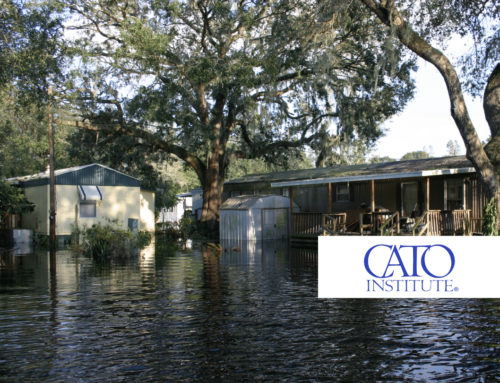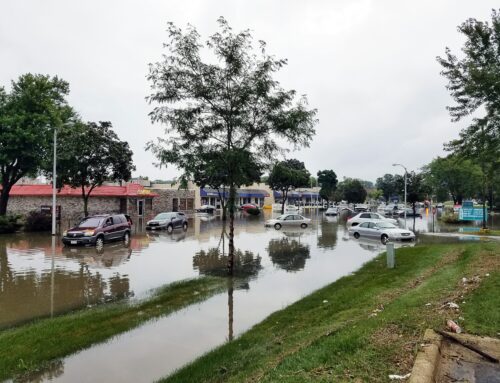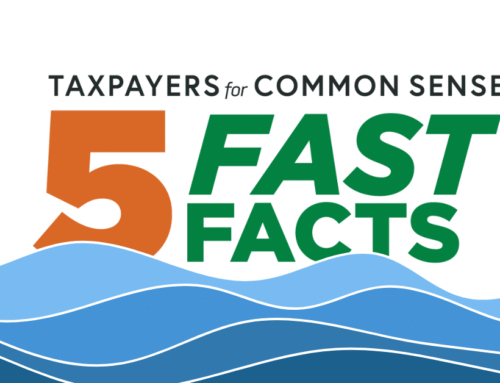As the first major Atlantic hurricane Eduardo formed this week, the Federal Emergency Management Agency (FEMA) was brewing up its own storm. Behind closed doors and with little public input, FEMA changed the rules this summer for a number of its programs designed to protect people from the harm of future disasters. Changes that will put lives, property, and taxpayer dollars at risk.
Floods are horrific events. Even when people escape, fast moving flood waters can decimate an entire town. And the slow creeping floods where water filled with soil runoff, sewage, and countless chemicals lingers for weeks or months can be even worse. In their wake is a moldy, mildewed, grime covered wasteland where everything from your home to your wedding album is lost.
To help keep people from having to experience these tragedies again and again, FEMA established a handful of Hazard Mitigation Assistance programs nearly 30 years ago. What distinguishes these programs from the flood protection activities of other agencies, like the Army Corps of Engineers, is a focus on spending taxpayer dollars getting people and property out of harm’s way. Instead of building billion dollar levees or massive flood walls to, hopefully, keep flood waters out, FEMA focuses on voluntary buyouts, rebuilding dwellings so they’re above flood heights, and making small-scale infrastructure improvements like re-grading ditches away from homes. The point is not to stop flooding but to reduce the likelihood that the next flood–which will come, eventually– will cause severe harm and disruption. You can’t harm what isn’t there—and structures built specifically to withstand the inevitable flood are more likely to survive without major damage. Perhaps more importantly, communities that have reduced their potential harm have usually also increased their overall resilience, making recovery easier and less painful in both human and fiscal terms.
The programs have been successful. During the Great Midwest Flood of 1993 Valmeyer, Illinois and Arnold, Missouri were just two of the many towns decimated. Both decided to use FEMA’s mitigation programs to move to higher ground. When the “once-in-a-lifetime” floods returned again in 1995, residents watched the river roll through the old town, harming nary a person and causing little financial damage.
But now FEMA has decided to open up the mitigation programs to large-scale, expensive levees and flood walls. While these have their appropriate place, there are already billions of dollars available every year for flood protection dams, levees, flood walls, and the like through the Army Corps of Engineers, and FEMA’s predisaster programs are among the relatively few dollars available for non-structural solutions. At Taxpayers for Common Sense we have had lots of criticisms of the Corps project selection and design process, but FEMA has even less experience evaluating the economic and environmental impacts of large-scale structural projects. And allowing expensive levees into the programs’ budgets may end-up concentrating all the funds on just a handful of projects, leaving many communities at risk. Not to mention, in addition to requiring significant capital investments, such large structural flood protections will degrade over time which is unlikely for non-structural protections.
By definition “mitigation” means to make something less harsh, severe, or violent, yet large structural projects actually increase the devastation from flooding by creating a false sense of security. Perversely, the presence of levees leads to more development within the flood plain, so when the big one comes again, more people’s lives and properties can be damaged. And the harm is amplified because under the highly-indebted, taxpayer-subsidized National Flood Insurance Program, if you have a levee certified as protecting against that 100-year flood, you aren’t required to buy flood insurance. So most people, unaware of their risk, won’t have flood insurance, setting them up for a devastating loss.
Helping individuals and communities recover from devastating floods by getting them out of harm’s way can be a responsible use of taxpayer dollars. Unilaterally changing the rules for programs with a proven track record of protecting taxpayers is not. FEMA should mitigate the damage their hazardous actions will cause by scrapping these changes that put lives, property, and taxpayer dollars at risk.







Get Social